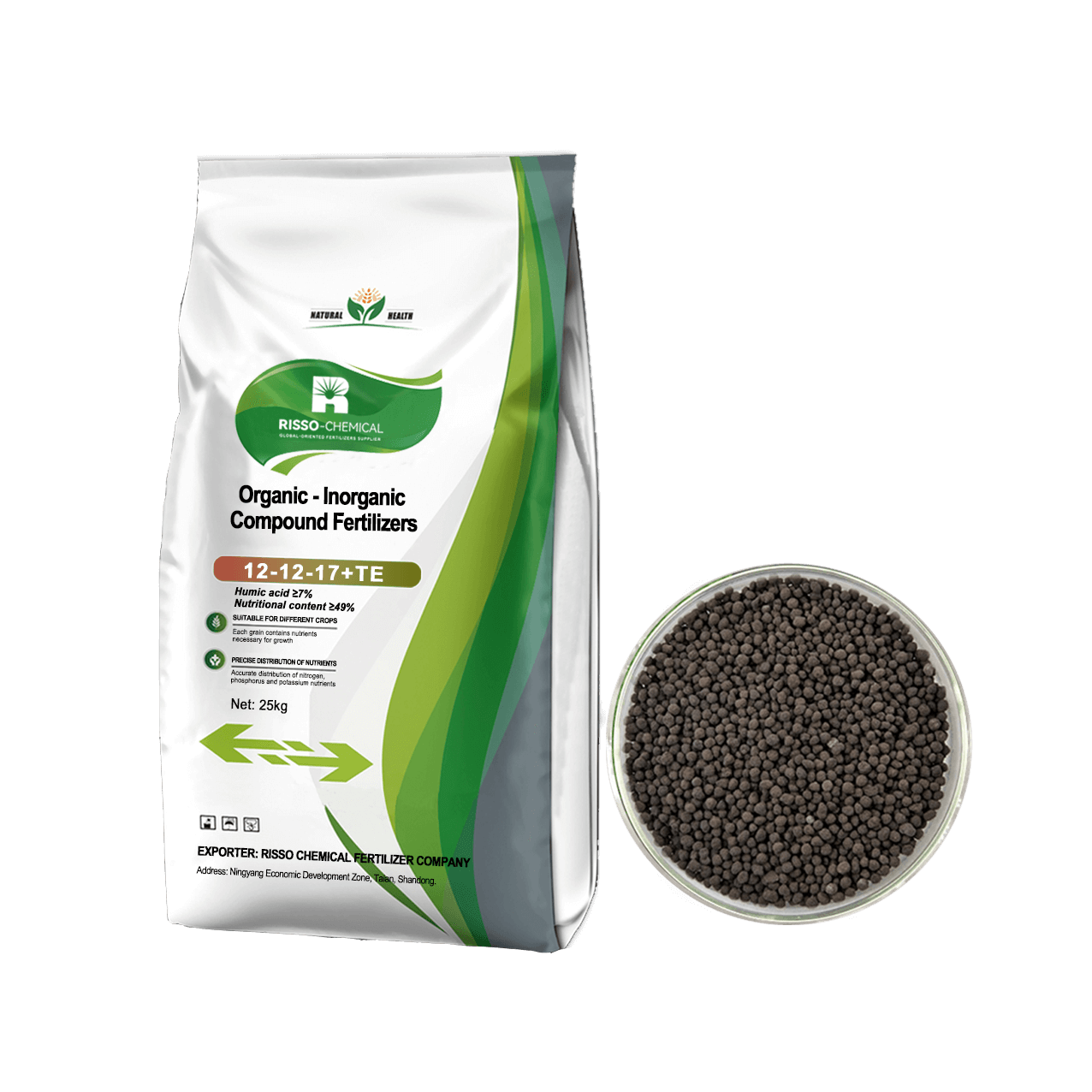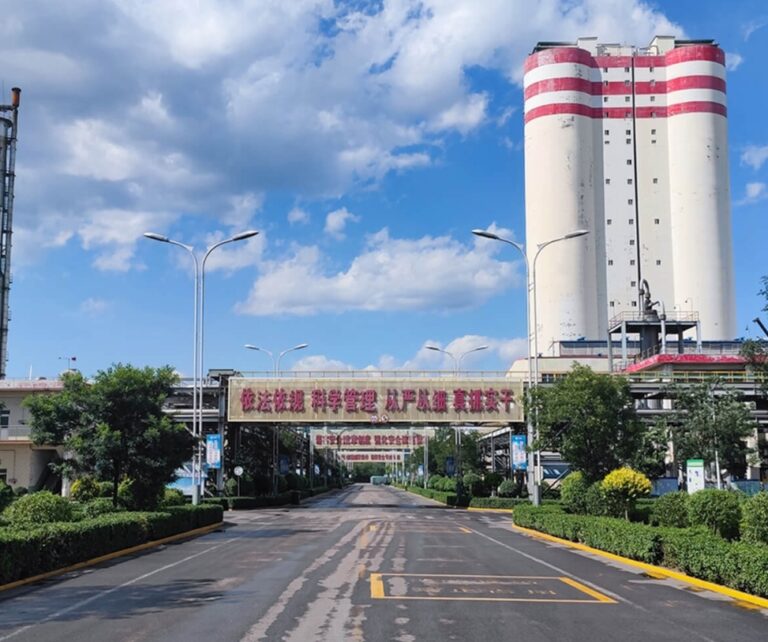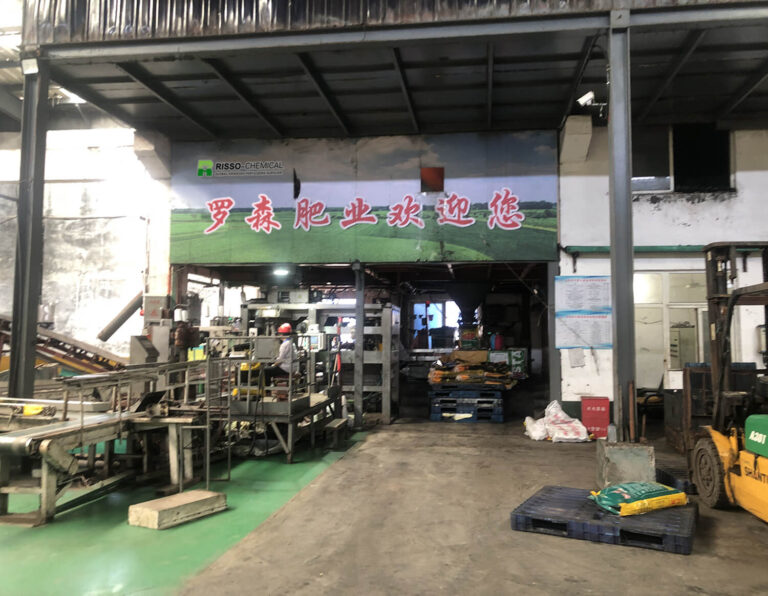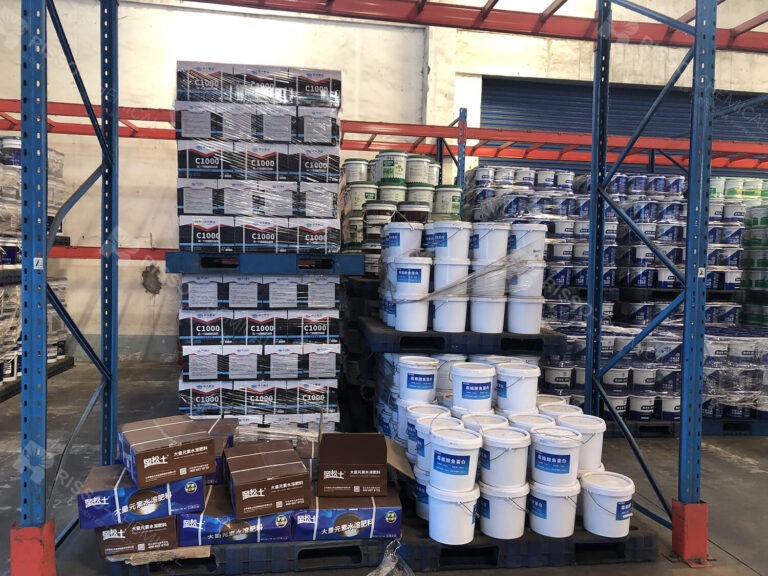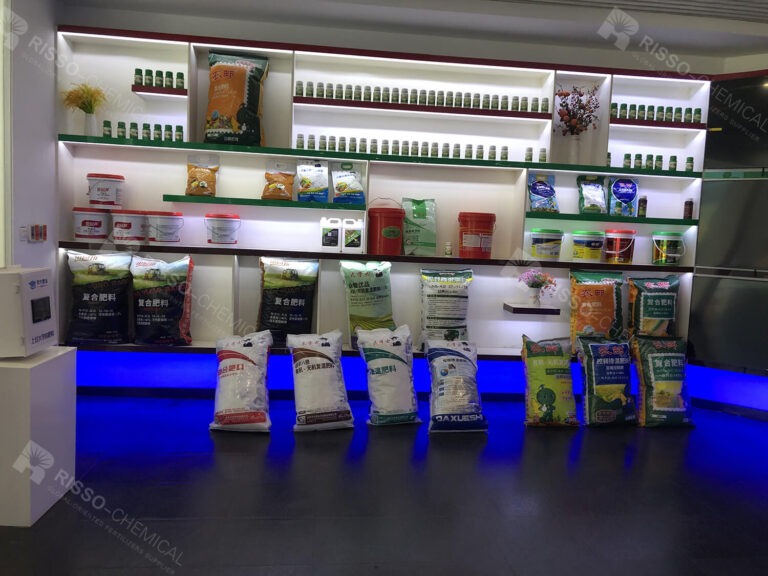Organic-Inorganic Compound Fertilizer
Organic-Inorganic Compound Fertilizer
| Product Name: | Customizable NPK ratio fertilizer |
| Category: | NPK Fertilizer – Proucut |
| Ingredients: | Ammonium Nitrogen, Water-soluble Phosphoric Anhydride, Humic acid, urea, MAP, potassium chloride or potassium sulfate. |
| Appearance: | Brownish-black granules |
| Grade Standard : | Agriculture |
| Certificate: | ISO 22241-1, SGS Certificate… Etc. |
Organic-Inorganic Compound Fertilizer Details
Risso Organic–Inorganic Compound Fertilizer combines balanced NPK nutrients with high-quality humic acid and plant-derived amino acids.
This dual-action formula delivers the quick nutrient release of mineral fertilizer and the long-term soil-building benefits of organic matter, making it ideal for sustainable, high-yield farming.
Formula Options:
| Formula Type | Total NPK Content | Organic Matter | Key Benefits |
|---|---|---|---|
| High-Concentration | ≥35% N + P₂O₅ + K₂O | ≥7% organic matter | Rapid nutrient supply for high-yield crops and peak growth stages. |
| Balanced | ≥25% N + P₂O₅ + K₂O | ≥10% organic matter | Ideal for most cash and staple crops, balancing immediate and sustained nutrition. |
| High-Organic | ≥15% N + P₂O₅ + K₂O | ≥30% organic matter | Excellent for soil restoration and long-term fertility, especially in continuously cropped fields. |
| NK Formula | Flexible N + K₂O ratios | ≥7% organic matter | Tailored for phosphorus-rich soils or crops with special nutrient demands. |
Custom N–P–K ratios are available to match regional soils and specific crop requirements.
Key Advantages
1. Superior Nutrient Efficiency
Chelation Effect: Humic acid binds micronutrients, reducing nitrogen, phosphorus, and potassium leaching and improving uptake.
Direct Absorption: Amino acids serve as readily available nitrogen sources and stimulate root growth and chlorophyll synthesis.
Proven Results: Field trials show nitrogen use efficiency increases by 25–30 % compared with standard NPK alone.
2. Soil Improvement & Fertility Restoration
Builds stable soil aggregates, enhancing aeration, water-holding capacity, and cation exchange capacity (CEC).
Raises soil organic carbon and buffers pH for a healthier, more resilient root zone.
Stimulates beneficial microbial activity for long-term fertility.
3. Higher Yields & Better Crop Quality
Promotes vigorous root systems and stronger photosynthesis.
Improves fruit and vegetable sugar content, vitamins, and color for higher market value.
Field data show average yield gains of 10–20 % across vegetables, fruits, and grains.
4. Stress Resistance & Sustainable Farming
Amino acids activate antioxidant enzymes, increasing drought, salinity, and cold tolerance.
Humic substances reduce heavy-metal toxicity and chemical runoff, lowering environmental impact.
Cuts chemical fertilizer use by 15 % or more, supporting low-carbon, eco-friendly agriculture.
Recommended Applications
Cash Crops: Fruit trees, vegetables, tea, grapes, flowers
Field Crops: Rice, wheat, corn, soybean
Protected Cultivation: Greenhouse vegetables, strawberries, blueberries, leafy greens
Application Guidelines
Base or Top Dressing: 40–60 kg per mu (≈600–900 kg/ha), adjusted to soil fertility and crop demand.
Drip Irrigation / Fertigation: Fully water-soluble for modern irrigation systems.
Foliar Feeding: Dilute 600–800× and spray during early morning or late afternoon for optimal uptake.


What will you get when touch?
✔ Quick & helpful reply within 6 hours.
✔ Tailored solutions for your project.
✔ One-stop product, tech, market.
Why Choose Organic-Inorganic Compound Fertilizer?
Dual Action Nutrition
Combines fast-acting NPK minerals with slow-release humic and amino acids, supplying immediate nutrients and sustained feeding.
Soil Health & Fertility
Improves soil structure, water retention, and microbial activity, while increasing organic carbon for long-term productivity.
Higher Yield & Quality
Stimulates root growth and photosynthesis, delivering 10–20 % higher yields and better flavor, color, and nutritional value.
Efficient & Sustainable
Boosts nutrient-use efficiency by 25–30 %, reduces chemical fertilizer needs, and lowers runoff and greenhouse emissions.



